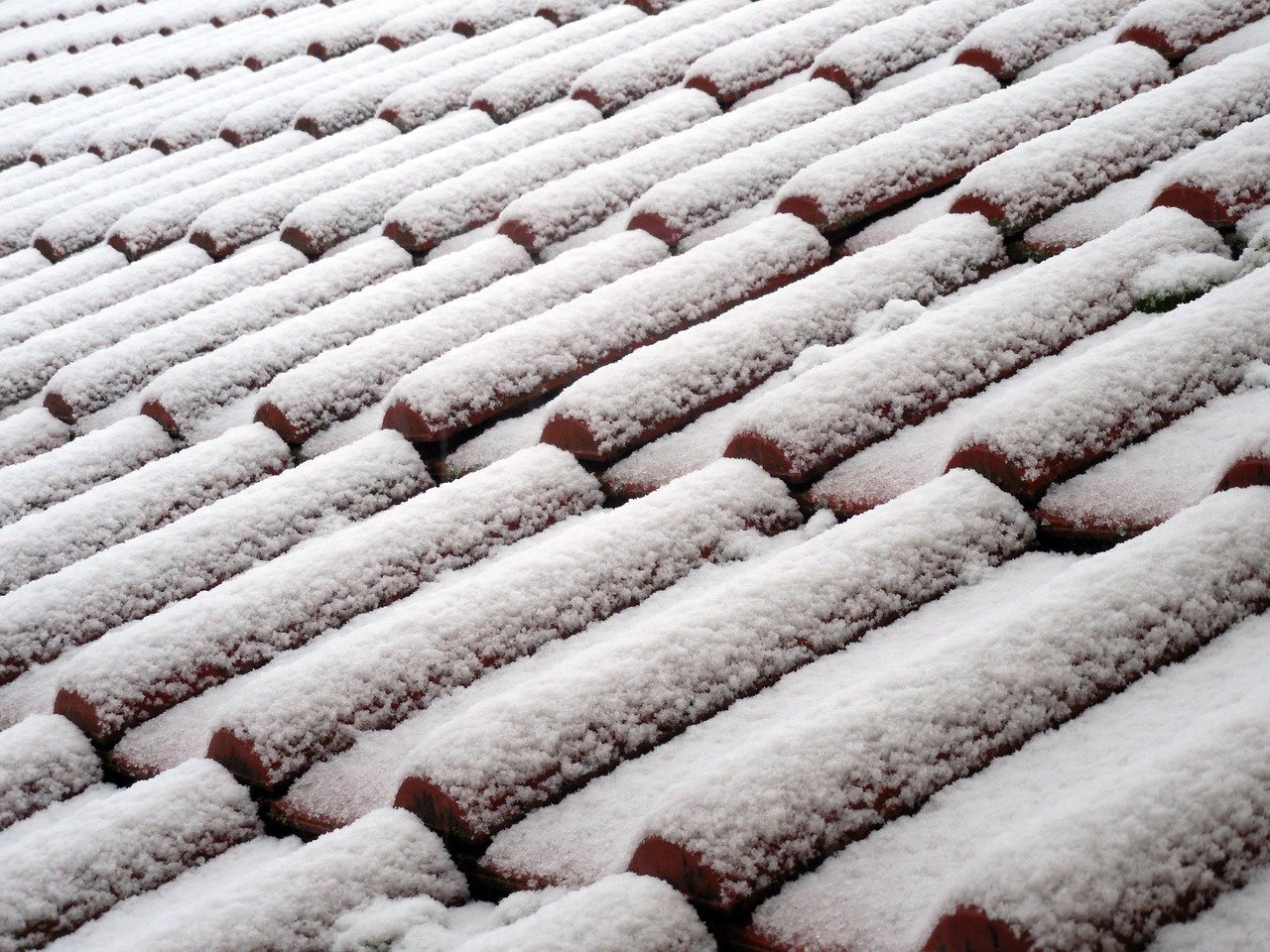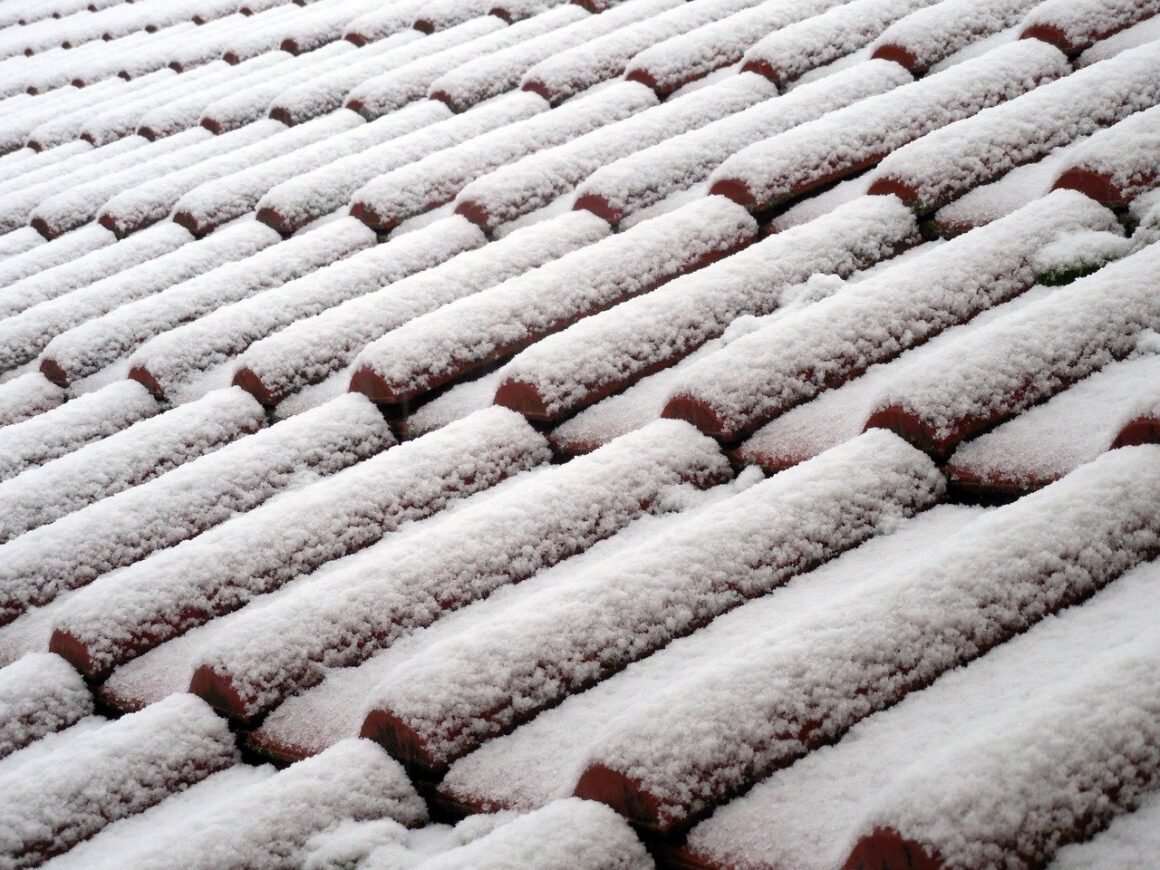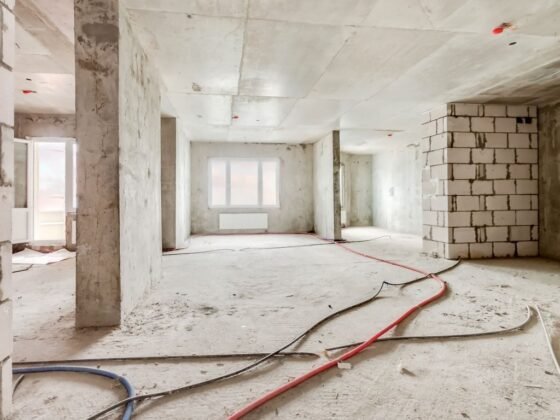Table of Contents Show
The seasons are changing, and you’re starting to wear layers and plan your holiday celebrations. Your to-do list already feels like it’s a mile long, and you probably don’t want to have to figure out how to repair a roof on top of all that.

But unfortunately, roof repairs are sometimes urgent enough that they can’t wait until the weather warms up. Winter weather can be unkind to rooftops, causing ice dams, leaks, and more.
Putting off these types of repairs can only cause more problems and cost you more money later on, so it’s wise to address them as soon as possible.
What Time of Year Is Best to Replace a Roof?
Winter is definitely not the ideal time to replace a roof, but it can be done if the contractors take added precautions to ensure the quality of the installation and the safety of the roofers.
Late spring and early fall are usually considered the best time of year to replace or repair a roof, as these seasons provide moderate temperatures and a low chance of snow.
Summer is another popular time to make roof repairs, but extreme heat can make it more uncomfortable for roofers to complete their job.
In reality, roof repairs and replacement can be done in any season—roofers just need to adapt to the current climate and have the right equipment to suit the weather.
Read Also:
- Do You Need a Roofing Expert? Know the Services Offered by Professional Roofers
- Preparing Your Roof for the Winter: Everything You Need to Know
- Tips for Choosing the Best Roofers for Roof Repair and Inspection
- Essential Roof Preparation Guides & Tips for Winter Season
- Key Considerations Before Hiring a Roofing Service
How Can You Tell If Your Roof Needs to Be Replaced?
Before you dive into winter roof repair, it’s important to find out if your roof might actually need total replacement, rather than a few quick repairs.
So how can you tell if your roof needs to be replaced? Here are some tell-tale signs:
- Your roof is more than 20 years old
- Your neighbors are getting new roofs (if the homes were built at the same time)
- Curled or cracked shingles
- Dark stains
- Moss growth
- Shingles are missing granules
- Wind damage
- Leaking
- Hail damage
- Broken roof vents
- Damaged flashing
- Exposed nails or cement
- Rusted flashing on the chimney
- Streaks
If you notice one or many of these signs on your roof, contact a roofing contractor near you for an inspection. A professional roofer will be able to diagnose the problem and let you know if it requires a few quick repairs or a complete roof replacement.
What Temperature Is Too Cold for a Roof Repair?
It’s usually best to repair a roof when the temperature is between 70 and 80 degrees Fahrenheit. But luckily, experienced roofing companies know how to repair a roof even when the temperatures drop.
Most roofers can perform roof repairs like shingle installation even when it’s 40 degrees outside.
If the temperature drops below freezing, it will be more difficult for roofers to operate equipment like nail guns and compressors. However, there is still a strong chance that the job can be done well if the roofing company takes added precautions.
Will Shingles Seal in Cold Weather?
Most roofing contractors use a self-sealing process to install shingles. This requires the heat of the sun to activate the adhesive and properly attach shingles to the roof.
Self-sealing is not possible in cold weather, but roofers can use an alternative method. This process takes a little longer, but manual sealing is just as effective and can even be preferred to self-sealing since roofers must take added care to make sure each shingle is properly sealed.
How Do You Seal Shingles in Cold Weather?
Asphalt shingles can be sealed in cold weather through the process of manual sealing. This is done by using an asphalt roofing cement or alternative adhesive that is applied to each shingle tab.
Shingles can become more brittle in the cold, so they should be stored in a warm area until just before use. The same method should be used for all other roofing equipment and materials.
Tips for Replacing a Roof in Winter
It’s best to leave winter roof replacement to the professionals. But if you plan on inspecting your roof or making some small repairs yourself, it’s crucial to follow proper safety precautions.
Here are some tips for how to repair a roof in the winter:
- Wear warm, dry clothing, including a hat and gloves
- Wear shoes with a strong grip
- Anticipate the repairs taking longer than they would in warmer temperatures
- Move slowly and cautiously
- Have someone there to spot and assist you
- Prepare all materials in advance
Investing in Your Roof
No matter where you live, your roof is a crucial structure that keeps your home more efficient and safe from the elements. So taking care of necessary roof repairs and replacement is money well spent.
And remember—whether you choose to replace a roof in winter or wait until it gets warmer, regular roof maintenance can help you save money and prolong the life of your roof.










